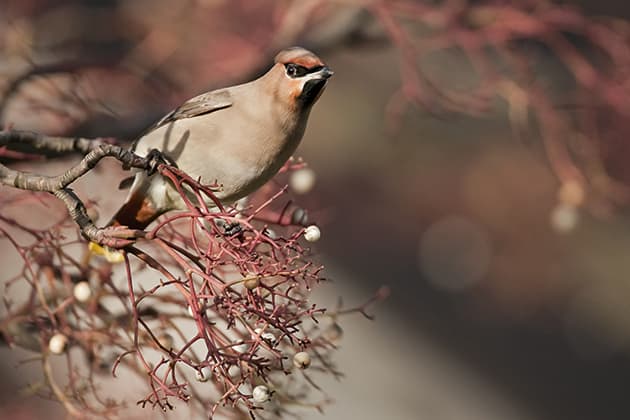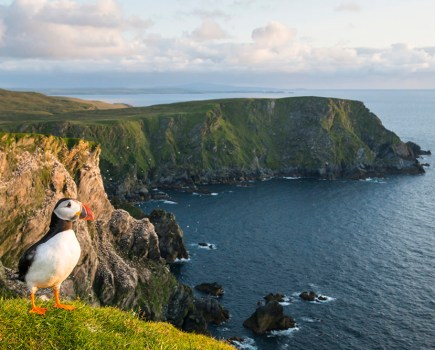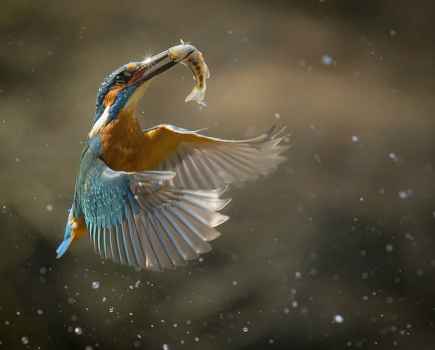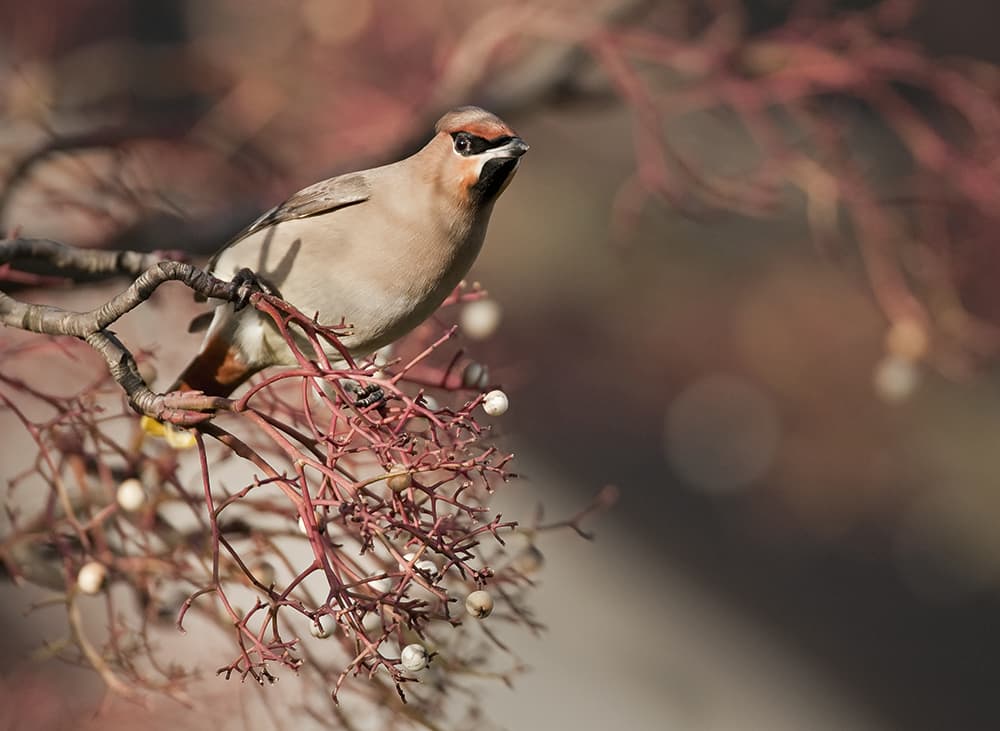
In irruption years, waxwings scour the whole country for food – from Land’s End to Shetland. All photos by Oscar Dewhurst
About the waxwing
With their prominent crest, pinkish hues, black mask and gaudy red-and-yellow wing markings, the waxwing is a wildlife photographer’s dream when combined with an aesthetic branch of rowan berries.
- Location Waxwings first appear in the north-east of the UK in November, then spread south and west, returning to breeding grounds in March.
- Size Waxwings measure 19-23cm, with a 32-35.5cm wingspan.
- Nest A cup-shaped nest will be placed in trees or shrubs in coniferous forests, often near water. In Europe, these birds breed in Scandinavia and across northern Russia.
- Diet During the winter, which is when you are most likely to see them, waxwings feed on fruit and berries, particularly rowan, hawthorn, cotoneaster and rose.
- Population Numbers vary depending on food availability, but the average winter population is 11,000. A poor berry crop in Scandinavia will push waxwings across the North Sea to the UK. In irruption years, they can appear all over the country.
Waxwings are a favourite among birders and photographers alike. When they arrive in the UK, it is usually because they cannot find enough food in Scandinavia, so they are often dismissive of humans and can be somewhat confiding.
Habitat
These birds are wanderers, cleaning out a group of rowan trees or cotoneaster bushes before moving on to the next food source. They aren’t fussy about location – most of my images were taken in north London, standing on a pavement on the A1. I’ve also seen images of waxwings taken in supermarket car parks.
Best time to shoot
While waxwings feed throughout the day, they may be more active in the morning and late afternoon. Although the sun is low in the sky during winter, there is still a noticeable difference with images taken at either end of the day. Going out early and late gives you the option of shooting into the sun to create silhouettes of the birds against vivid orange and red backgrounds, resulting in some striking images.
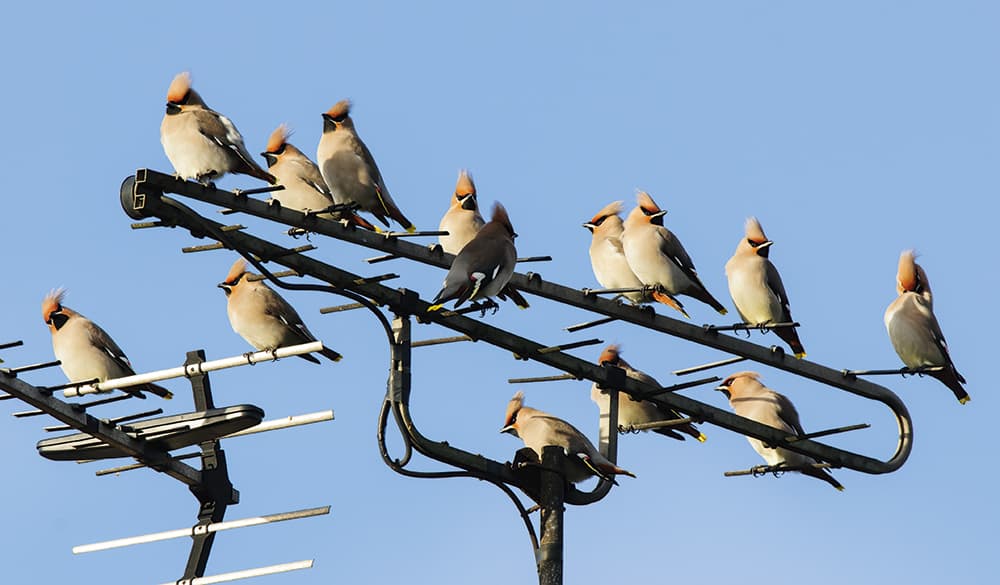
Waxwings perch on aerials in urban areas, and can be found in berry bushes near motorways
Shooting advice
Settings
I use aperture priority or manual mode, depending on the light. If it is a clear sunny day and the light is unlikely to change, manual means your camera’s metering won’t be thrown by a particularly dark branch or light object. If the sun keeps going behind the clouds, however, I would stick with aperture priority simply because it means you do not have to keep changing the exposure to keep up with the weather. As the birds will always be moving, continuous autofocus is a must, and a single focus point reduces the chance of the camera switching focus to the background.
Finding them
As waxwings often do not spend more than a few days in a particular location, finding them is difficult on your own. They are a popular quarry of birders and photographers, however, so the best approach is to check the recent sightings pages of local and county bird clubs. There is also a Twitter account (@waxwingsuk) that posts locations as and when enthusiasts hear of them. Once you’ve decided on a location, give yourself a few hours because if they are not in the berry trees they may be perched on an aerial or a tree nearby. Listen out for their distinctive trilling sound.
Approach
As the main concern of these birds is food, they are often unfazed by people. That said, it pays to approach slowly, because if you spook one it is likely they will all be startled and take off. It can be difficult to know where to focus when there are many, so try focusing on a photogenic branch or small part of the tree with a nice background behind it.
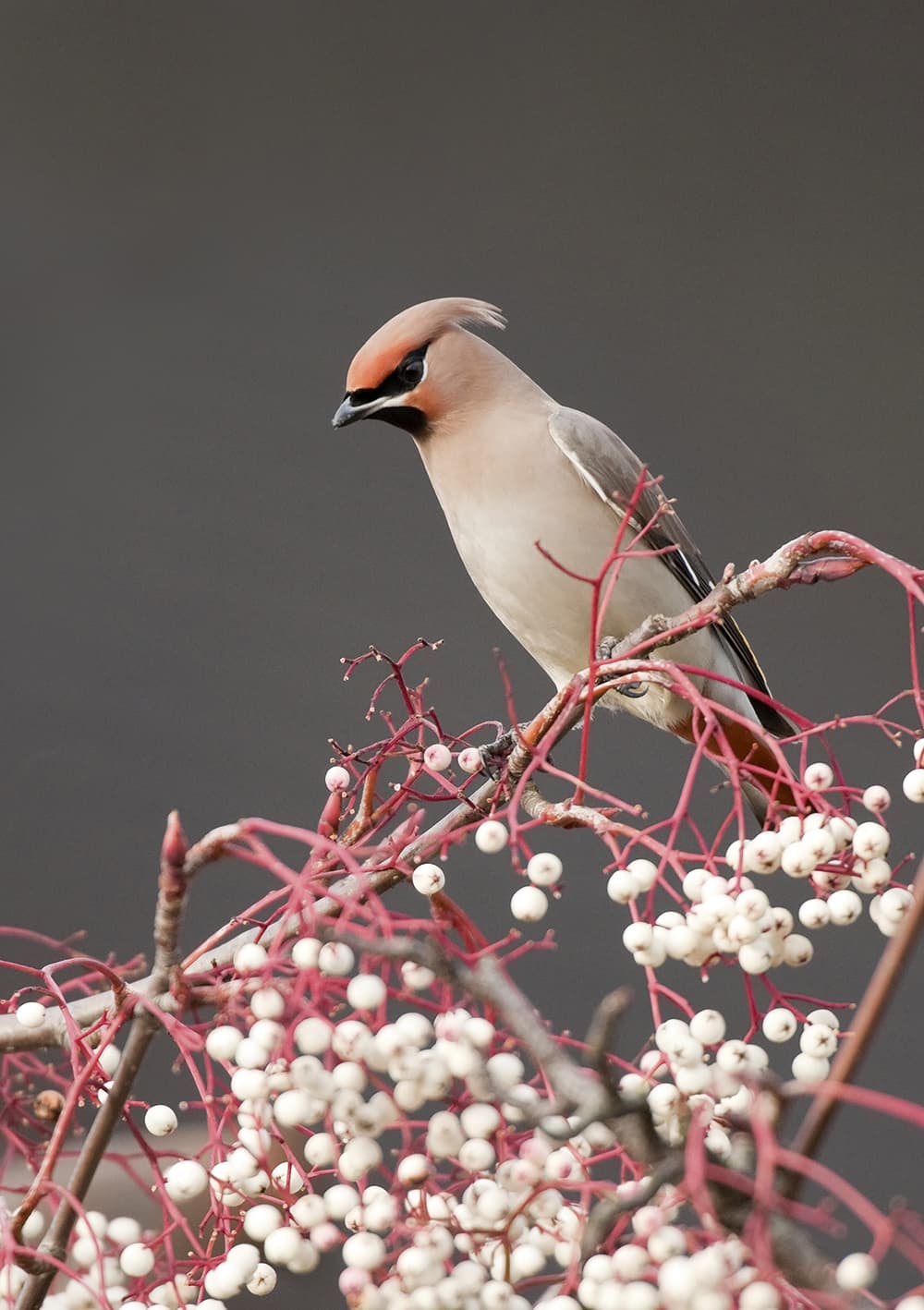
You can create a more striking composition by focusing on a waxwing perched on a particularly beautiful branch
Kit list
Gloves
The best time to look for waxwings is in the middle of winter. Standing still for many hours is not a pleasant experience, and your camera, lens and tripod will get cold. Gloves make it easier to operate your equipment when waxwings do eventually appear.
Tripod
As photographing waxwings can involve quite a bit of waiting around, being able to leave your camera on a tripod during periods of inactivity is much easier than holding it for long periods.
Oscar Dewhurst is an award-winning wildlife photographer who has dedicated countless hours to photographing bitterns. He also finds time to photograph many other species, from urban foxes to primates in the Peruvian Amazon. www.oscardewhurst.com

